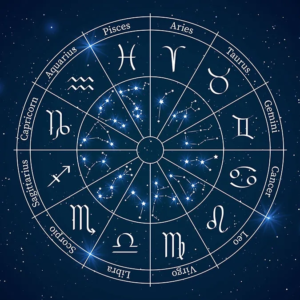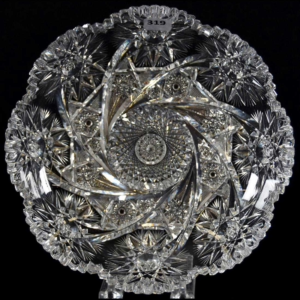Dolerite stone – properties, virtues & benefits
Dolerite, a magmatic rock also known as Stonehenge stone or Preseli stone, has a rich history. Since Neolithic times, it has been used by man to build the famous archaeological site of Stonehenge, which remains shrouded in fascinating mysteries and legends. Although its secrets have yet to be fully revealed, learn more about the history of this iconic Stonehenge stone.
DOLERITE CHARACTERISTICS
- Chakra: Root.
- Properties: Stability, Anchoring, Protection.
- Astrology: Saturn.
- Zodiac: Capricorn.
- Elements: Earth.
- Colors: Black, Dark Gray, Dark Green.
- Hardness: 6-7 (Mohs scale).
- Chemical Formula: (Ca,Na)(Mg,Fe,Al,Ti)(Si,Al)2O6.
- Associated god: Hephaestus (Greek mythology).
DOLÉRITE – HIS HISTORY
Dolerite is closely associated with the iconic monolithic monument in southern England, Stonehenge, which attracts large numbers of visitors every year fascinated by its history. Its origins date back over 5,000 years to the Bronze Age, and it consists of a circle of standing stones, surrounded by ditches and embankments. Although its purpose and use remain unknown, archaeologists suggest it may have served as an astronomical observatory, a place of religious worship or a community gathering point.
Stonehenge is made up of two types of stone: blocks of siliceous sandstone and dark, bluish-hued stones called Dolerites or Preseli stones, sourced from the Preseli Mountains, over 200 km away. It’s still a mystery how these massive stones were transported such a long distance, adding magic to this fascinating place.
The stones at Stonehenge, which belong to the massive magmatic rock category, feature engravings of daggers, axes and daggers, suggesting that the site was used for rituals from the Bronze Age to the present day.
DOLERITE STONE – ITS ORIGIN AND COMPOSITION
Dolerite belongs to the category of microgabbros, a magmatic rock formed by the cooling of molten magma deep in the Earth. It has a grainy structure and a dark gray to black color, tinged with green or blue. It is composed of various minerals such as feldspar, pyroxene and olivine. Dolerite deposits are found all over the world, but the most famous are at Stonehenge in England, at Quelfennec in France’s Côtes-d’Armor region, in the USA, Canada and Australia. This rock is extracted in the form of blocks of significant weight and size.
Since Neolithic times, dolerite has been widely used by man to fashion prehistoric tools and weapons, as well as to build monuments and sculptures in many cultures around the world, such as ancient Egypt, ancient Greece and medieval Europe. Its name comes from the Greek “doleros”, meaning “deceiver”. It gained particular renown thanks to the iconic archaeological site of Stonehenge in southern England, where it was used to build amazing cromlechs.

DOLERITE STONE – VERTIES AND PROPERTIES
For millennia, Dolerite stone has been recognized for its magical virtues and healing properties. Wearing it as a talisman, it was considered to have a protective and reassuring role.
PSYCHOLOGICAL DOLERION
Nowadays, dolerite is regarded in lithotherapy as a stone beneficial for emotional and physical healing. It is said to relieve stress and anxiety by enhancing inner stability and promoting mental clarity.
Dolerite is a powerful anchoring stone that resonates with the root chakra. It helps to find balance and harmony, and provides a sense of inner peace, encouraging meditation and introspection.
PHYSICAL DOLERITY
At a physical level, Dolerite stone is reputed to strengthen the immune system and relieve chronic or joint pain. It is said to have a beneficial effect on tissue regeneration and to aid faster healing after injury.

DOLERITE STONE – CLEAN AND RECHARGE
To clean and recharge dolerite stone, follow these steps:
- Physical cleaning: use a soft brush and lukewarm water to remove dust and impurities from the stone surface. Avoid using harsh chemicals.
- Energetic cleaning: immerse the stone in demineralized water with a little sea salt added for a few hours. The salt helps eliminate negative energies.
- Rinsing: Rinse stone thoroughly with clear water to remove salt residue.
- Recharging: To recharge dolerite, expose it to sunlight for a few hours, or place it on a quartz cluster or amethyst geode overnight. Sunlight and the vibrations of the other stones will help restore the dolerite’s energy.
- Purification: If you wish, you can also purify the stone by passing it through the smoke of an incense, such as white sage or palo santo, to eliminate negative residual energies.
After this process, your dolerite stone will be cleaned and recharged, ready to be used again. Remember to repeat this process regularly to maintain your stone’s energy.
WHERE DOES THE NAME DOLERITE COME FROM?
The name “dolerite” comes from the ancient Greek “dolerós” (δολερός), meaning “deceitful” or “deceptive”. It was introduced by French geologist Alexandre Brongniart in the early 19th century to describe this intrusive magmatic rock. Dolerite was so named because of its resemblance to basalt, another magmatic rock, and the difficulty of distinguishing them with the naked eye. Indeed, the two rocks share similar characteristics, such as their dark color and fine texture, although their geological formations and mineral compositions are different.
WHICH CHAKRA DOES DOLERITE ACT ON?
Dolerite acts primarily on the root chakra, also known as Muladhara. This chakra is located at the base of the sPine and is associated with the energies of earth, stability and grounding. By working on this chakra, dolerite can help reinforce a sense of security and balance, encourage connection to the earth and promote protection from negative energies.
WHICH ASTROLOGICAL SIGN IS ASSOCIATED WITH DOLERITE?
Dolerite is associated with the zodiac sign of Capricorn. Capricorn is an earth sign, ruled by the planet Saturn, and is known for its sense of responsibility, discipline and perseverance. Dolerite, by strengthening the root chakra, can help Capricorns feel more grounded and stable, enabling them to pursue their goals with determination and serenity.
SUMMARY OF THE DOLERITE STONE
Dolerite, also known as diabase, is an intrusive igneous rock of intermediate texture, formed during the solidification of magma beneath the earth’s surface. It consists mainly of minerals such as plagioclase, pyroxene and sometimes olivine, and is generally dark in color, often black or gray-green.
.
Dolerite is frequently associated with geological formations such as dykes and sills, where magma seeps through and solidifies in fractures and pre-existing rock layers. It is also present in lava Pillows, which form when an underwater volcanic eruption produces bubbles of lava that cool raPidly as they come into contact with water.
.
Dolerite stone has several properties of interest to the construction and materials industry, including high compressive strength, durability and wear resistance. As a result, it is often used in the manufacture of aggregates, paving stones, railway ballast and building stone.
In addition, some dolerite formations have cultural and historical significance. For example, dolerite stone was used to build megalithic monuments such as Stonehenge in England and parts of the walls of Jerusalem.

